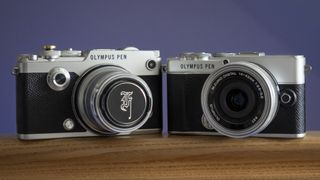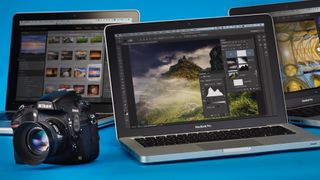
The Quick List ↩
1. Best for creative editing
2. Best for Lightroom rival
3. Best for value
4. Best for RAW processing
5. Best for plugin suite
6. Best for complete solution
7. Best for effects tools
8. Best for beginners
9. Best for intermediates
10. Best for all-rounders
How to choose
How we test
Choosing the best photo editing software isn't easy, as there are so many different options and features available. In this guide, we'll help you find the best processing software for you, whether you're an enthusiast looking to enhance your landscape images or a professional who needs serious retouching tools.
The best photo editing software for you isn't always the most expensive or complicated option. Some photographers will need a powerful organizing tool like Lightroom Classic, some need one-click creative effects and inspiration, while others need the kind of technical quality that only the best RAW image processing tools (DxO PhotoLab 6) can provide. Then there are photographers and creatives who want the detailed retouching and powerful compositing tools of a traditional photo editor like Adobe Photoshop CC.
Photo editing software has advanced quickly, and many programs now allow you to edit RAW files alongside JPEGs without any intermediate processing, wind back your edits if you change your mind, and create multiple 'virtual' versions of the same image. They're also incorporating AI-powered features, such as one-click editing.
Editing software can demand a lot of resources, and only the best photo-editing laptops or the best desktop computer for photo editing will be able to handle serious creative editing, although, for smaller corrections and organization, even the best tablet for photo editing can handle these less intensive tasks.
You might also want to think about picking up one of the best monitors for photo editing to ensure that your images are displayed in all their glory, with the sharpness and color accuracy needed for photo editing.
The best photo editing software today doesn't just fix and correct your images, it gives you whole new ideas about what your photos could look like with presets and profiles. This is the best photo editing software you can get right now.
The Quick List

Best for creative editing
Adobe's Photography Plan gives you access to Adobe Photoshop CC, Adobe Lightroom Classic, and Adobe Lightroom.
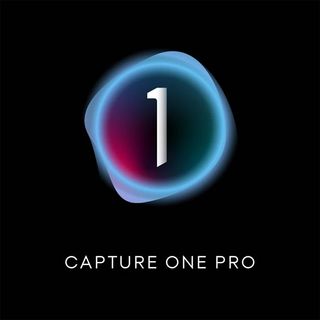
Best for Lightroom rival
Capture One 23 is Lightroom's closest rivals with many of the same types of tools and workflows on offer. It is however nearly twice the price which may put some people off.

Best for value
This option has everything that Photoshop offers but with a perpetual license rather than subscription.

Best for RAW processing
An incredibly powerful and effective non-destructive photo browser, raw processor, and image editor.

Best for plugin suite
One of the best plug-in suites that has a wide array of amazing tools, controls and effects.

Best for complete solution
ON1 Photo RAW is perhaps the single most complete solution of all the photo-editing programs available.
Best photo editing software in 2024
Why you can trust Digital Camera World
Best for creative editing
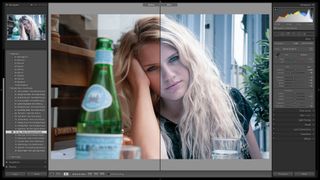
Specifications
Reasons to buy
Reasons to avoid
Adobe's Photography Plan gives you access to Adobe Photoshop CC, Adobe Lightroom Classic, and Adobe Lightroom. Despite its immense power, Photoshop is slick and straightforward to use thanks to a very clean interface. Its support for selections, masks, and layers is unmatched, making it the tool of choice for complex composite images.
Lightroom Classic is the best option for regular 'desktop' editing, and while Lightroom offers cloud-based storage to make all your images available everywhere, on any device, it needs 1TB cloud storage, which doubles the cost of the Photography Plan. The latest updates in Lightroom use AI to 'intelligently' select subjects and skies in your images, and it's incredibly effective.
Some people don't like Adobe's subscription model, but it's being adopted by rivals and is a cost-effective route into software that was once prohibitively expensive.
Read our full Adobe Photoshop CC review.
Best for Lightroom rival
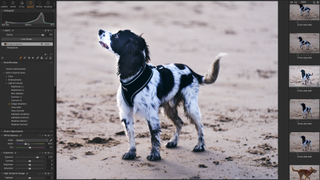
Specifications
Reasons to buy
Reasons to avoid
Capture One offers pretty much the same combination of cataloging tools, non-destructive editing, local adjustments, and preset effects as Lightroom. However, it’s over twice the price and doesn’t have Adobe’s Creative Cloud ecosystem.
What it does have is a workflow that’s well suited to professional commercial photographers shooting ‘tethered’ in a studio and collaborating live with clients via the new Capture One Live service.
Even as a Lightroom replacement, Capture One has a lot to offer. Its raw processing is clearly superior, and its system of adjustment layers and masks means that every adjustment has access to every editing tool.
It also brings a new Cull window to make it easier to sort through large-scale shoots. However, it does look as if Capture One will prioritize support for subscriptions in 2023 over perpetual licenses, which won’t please everyone.
For more details read our Capture One Pro 23 review.
Best for value
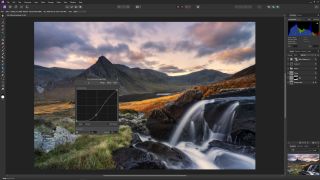
Specifications
Reasons to buy
Reasons to avoid
We complain that there's too much Photoshop doesn't do, but the fact is for many photographers this kind of old-school image editor is exactly what they need. And Affinity Photo 2 gives you exactly the same thing, but subscription-free, via a single extra-low payment. Affinity Photo 2 is sold at a budget price point, but it has the tools and the features and the power to compete with Photoshop head-on.
Affinity Photo 2 is Serif’s most impressive version of the software to date. The new features, in some cases, are remarkable, despite a useful image browser/cataloging for Raw files remaining absent. But if you’re looking for a highly capable Adobe alternative with an incredibly good value perpetual license to boot, look no further.
Read our full Affinity Photo 2 review.
Best for RAW processing
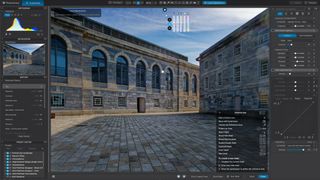
Specifications
Reasons to buy
Reasons to avoid
DxO PhotoLab 7 is a very powerful and effective non-destructive photo browser, raw processor, and image editor. Its lab-developed lens corrections are excellent, correcting edge softness too, its new and improved DeepPRIME XD processing gives spectacular results with high-ISO images, and its new ‘nested’ Projects feature makes it a much better photo organizer.
All your adjustments can be changed, removed, or added to in the future, and you can also create ‘virtual copies’ to try out different adjustments without having to physically duplicate your original files. If you work with RAW files and need the purest quality, it’s perhaps the best editor out there today.
Read our DxO PhotoLab 7 review for more details
Best for plugin suite

Specifications
Reasons to buy
Reasons to avoid
Nik Collection consists of eight separate plug-ins which can also be used as standalone programs. Analog Efex Pro is brilliant at analog/darkroom effects, while Color Efex Pro is a hugely powerful suite of filters for individual use or combined into 'recipes'. Silver Efex Pro remains the best digital black and white plug-in ever and is updated in this version with a fresh, modern interface, a new ClearView option, and more powerful selective control points.
Viveza gets the same treatment and is elevated from a relatively simple local adjustment tool into a much more powerful plug-in. HDR Efex Pro is pretty handy as an HDR merging/effects tool, and while Sharpener Pro and Dfine feel pretty dated now, they can still be useful for output sharpening and noise reduction respectively. And then there's Perspective Efex, DxO's most recent addition, which offers powerful lens and perspective corrections, tilt-shift effects, and advanced wide-angle distortion correction. You can use the Nik Collection plug-ins with Photoshop, Lightroom, and from within DxO PhotoLab – or use them as external editors with other programs like Capture One.
Read our full DxO Nik Collection review.
Best for complete solution
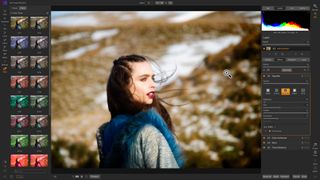
Specifications
Reasons to buy
Reasons to avoid
ON1 Photo RAW is perhaps the single most complete solution of all the programs here, and the 2022 version is the best yet, with new Sky Replacement AI, the integration of ON1 NoNoise AI, and, with the latest update, the integration of ON1 ReSize AI, previously sold separately. There's also an optional ON1 subscription service for Adobe-style image sharing and synchronizing with mobile devices.
ON1 Photo RAW 2022 has a built-in hybrid browsing and cataloging module that gives you fuss-free exploring of your image folders but more powerful search tools if you need them. It has an Edit module with Develop, Effects, Portrait, and Local (adjustment) panels, and the Effects module alone has a vast array of filters that can be adjusted, masked, and combined in an infinite array of permutations. It pulls off a particularly amazing trick, incorporating layers, masking, and compositing tools into its fully non-destructive workflow.
Read our full ON1 Photo RAW 2022 review.
Best for effects tools

Specifications
Reasons to buy
Reasons to avoid
Luminar Neo is a mix of the good, the disappointing and the plain glitchy. Its AI tools – the good ones – are truly spectacular, but they are diluted somewhat by the borderline pointless Structure AI tool, or Relight AI tool – pointless, because they use AI to do something you could do yourself quite simply and almost certainly better.
The way the Presets are now closed off and have to be applied right at the start of the workflow does not feel like a step forward in any way, except maybe as a route to monetization, and while Luminar Neo does support layers, it’s no Photoshop.
Skylum has always wanted to produce a simple, effective photo editor that skips tedious technicalities. Luminar Neo succeeds in part, but Skylum has brought another kind of confusion with its constant re-invention and re-marketing of Luminar itself.
One more thing. Luminar Neo is certainly not expensive, but even so, you might want to see how it runs on your computer. However, there's no trial version, only a "money back guarantee". Luminar Neo can be used as a standalone program, or as a plugin with Photoshop CC, Lightroom Classic, or Apple Photos.
Read our full Skylum Luminar Neo review.
Best for beginners

Specifications
Reasons to buy
Reasons to avoid
Photoshop Elements 2023 provides all the organizing and fixing tools that the average photographer requires, plus it gives you in-app guidance on how to develop new creative image-adjusting skills. It may not be an essential upgrade if you already own Elements 2022 though the new Moving Elements command does create eye-catching social media content that should generate some extra likes on your Twitter or Instagram feeds.
You can get Photoshop Elements on its own, or with Adobe Premiere Elements as a bundle – Premiere Elements does for video what Photoshop Elements does for photography. Elements 2022 is good value, but despite the increasing inclusion of Adobe Sensei AI technologies, its interface, its approach to editing, and its Guided Edits do feel a bit old-fashioned.
Read our full Adobe Photoshop Elements 2023 review.
Best for intermediates
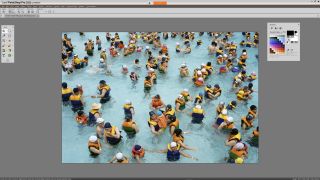
Specifications
Reasons to buy
Reasons to avoid
PaintShop Pro 2022 builds on the upgrades in the previous release of the software to provide the best version to date. The price for the Ultimate version makes it a no-brainer over the standard version based on all the extras you receive for a small increase in price, but since this is Windows-only software Mac owners, unfortunately, miss out.
It's an interesting alternative to Photoshop Elements, giving photo editing novices a helping hand to get started but also offering more advanced tools for the more experienced. Our main issue with Paint Shop Pro 2022 is that it feels like a 'me-too' program that cashes in on the latest trends without bringing anything new – and the sense that it's being developed mainly for its fanbase.
Read our full Corel PaintShop Pro 2021 review.
Best for all rounders
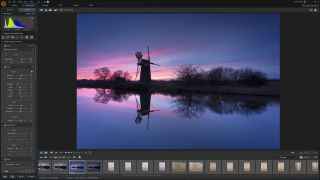
Specifications
Reasons to buy
Reasons to avoid
If you’re just getting started in photography, you may want photo-organizing software that's relatively simple to get started with. In this case, take a look at CyberLink PhotoDirector, which has a friendly and approachable interface that beginners will find it easy to get on with. You can import photos or folders directly from your camera and organize them by categories, tags, and keywords.
There’s also a capable face recognition tool. When it comes to editing your images, there are a bunch of preset filters as well as basic editing tools. There is a range of guided edits, such as Dispersion Effect and Glitch Art, those novices who are looking to improve their pictures will appreciate. This is a great tool for visual experimenters, but probably not one for pro photographers.
Read our full PhotoDirector 12 Ultra review.
How to choose the best photo editing software
With so many photo editing possibilities, it doesn't take long to figure out that one application alone is unlikely to meet all those needs. You can find more help on what to look for in the best photo editing software at the bottom of this page.
Today, there are more options than Photoshop – the one-time 'king' of photo editors. Adobe's Photography Plan includes Photoshop and Lightroom, which cover a lot more ground between them – but there are still plenty of non-Adobe rivals that can match their scope.
If you want advanced black and white effects, retro/analog filters, HDR merging, or one of a dozen other specialized 'looks', you're often better off using a custom-made plug-in or a different application.
Remember, though, it's not just about the software. The best photo-editing laptops, desktop computers, and monitors for photo editing can help you process images quickly and accurately, while the best external hard drives store your finished works safely.
What is the best photo editing software for beginners?
A lot of the editing software on this list is an easy entry point for beginners getting into photography but offers a lot of powerful features as you progress your skills, allowing you to gradually unlock your editing potential as you go.
Adobe Lightroom CC and Luminar Neo are two of the easiest pieces of software to get started with as you begin your editing journey. Both have easy-to-understand user interfaces and offer a quick editing experience without having to drill down into different panels and advanced settings. However, both of these photo editors do offer a lot of advanced features when you are ready for them.
Do most photographers edit their photos?
The short answer is, yes. Most, if not all professional photographers apply some editing to their images, but the amount of editing varies for each photographer and what final image they are trying to create.
No camera is completely perfect, and there will usually always be a couple of very slight tweaks on lighting or color to make on any image. If a photographer's images look especially creative or stylized, then you can bet they have edited the image extensively.
Editing images is also a great way to add your own signature style and personality to an image and get future photos instantly recognized as yours. If every photographer used same the in-camera JPEG, wouldn't that be boring!
How we test photo editing software
Here are six factors we evaluate when testing photo editing software. Think of this as a checklist. You might not need all of these features, but we do take them into account in our reviews.
1. Powerful retouching, masking and compositing tools: This is traditional Photoshop territory, and if you need to create complex illustrations or carry out detailed retouching and repair work, a program like Photoshop (or Affinity Photo) is likely to be your first stop.
2. Image organizing and cataloguing tools: The more photos we take, the more organization they need. At the start of the digital imaging revolution the novelty of being able to edit images caught everyone's attention, but now the task of keeping images organized, searchable and shareable has become increasingly important.
3. Non-destructive editing: Do you have to process or 'develop' RAW files before you can edit them? In Photoshop you do, via Adobe Camera RAW, but an increasing number of rival programs offer seamless RAW processing alongside JPEG and TIFF images. What's more, you can 'roll back' or change your edits at any time.
4. High-quality raw processing: All RAW processing tools are NOT the same. Adobe's RAW processing (in Lightroom and Adobe Camera RAW) is used by millions, but the results certainly aren't the best. If RAW processing quality matters to you, then you'll want to know how well it works.
5. One-click creative presets: Very often, the problem for photographers is not knowing how to do something, but knowing WHAT to do. That's where programs with an extensive library of one-click presets can give you a real head-start, showing you how your images could look using adjustments you might not even have thought of.
6. Beginner friendliness: Software has certainly moved on and many photo editors are now much more novice-friendly than they used to be. The more technical photo editors on the market may offer more tools and give better results in expert hands, but if you're just starting out and you're baffled by all the jargon, a basic beginner-friendly program may be a much better choice than a more advanced one, even if, technically, it's not as good.
7. Value for money and buying options. When we look at software, we evaluate how it compares to similar programs on the market, and how you can pay for it. Subscriptions are unpopular with some, but that’s the way the world is heading. A few of the programs in our list are available as single-fee licenses, but more and more publishers favor subscriptions – Capture One looks to be choosing them in 2023, and Skylum has practically finished
the transition


